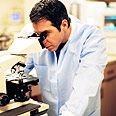
Though radiation tends to have a bad reputation, usually being attributed as dangerous to the human body particularly causing damage to cells, the experiments showed that the sperm cells did not show any damage.
In fact, after three minutes of radiation exposure with wavelengths ranging from 400 to 700 nanometers, scientists discovered an increase in oxygen particles known as reactive oxygen species or (ROS) containing oxygen ions and peroxides were found as a result of the light waves. This increase in ROS has been attributed to the increase of motility of sperm. The sperm samples also showed an increase amount of the protein kinase A, an enzyme which is responsible for many key functions within sperm cells. Calcium ions within the sperm cell were increased due to the visible light waves as well.
In most cases of male infertility, the cause for substandard sperm quality is difficult to determine. Whether the issue lays in the quantity or quality of sperm, this discovery will have a positive contribution to success rates in in-vitro treatments as increased sperm motility means an increase in the chances of one sperm cell reaching the egg on its own. If not, and the issue is both quantity and quality of sperm, doctors execute what’s called micromanipulation of fertilization where a single spermatozoon is inserted into the egg.
"Our hope is that the new method which was tested, much like the additional methods that are currently being researched, could improve the success rate and provide hope to couples who are not helped by fertility treatments stemming from low-quality sperm," Professor and director of the In-Vitro unit at the Obstetrics and Gynecology Department of the Meir Hospital in Israel, Adrian Shulman, tells Ha’aretz.
There is a level of ambiguity in the testing of sperm for quality. Shulman goes on to discuss the difficulty in the testing done for poor quality sperm patients. Shulman addresses the changes sperm cells undergo between the time of ejaculation and the time of fertilization.
Furthermore, due to the lifespan of sperm which has been reported to be 72 days, the tests may show that a male patient’s sperm is poor quality but this may be only due to an illness of medical treatment that the patient underwent two months prior to the testing. Therefore, Shulman advises that a second test should be taken between two and three months after the first test to ensure accuracy in the findings.
Better alternative
The overall live birth rate from in-vitro treatments is 27% according to an article from the Canadian Medical Association Journal. If these finding are confirmed with additional testing, those affected by male infertility may not need to go through ICSI, Interacytoplasmic Sperm Injection. This procedure is very expensive and delicate in nature though is commonly performed as part of in-vitro treatments; it involves the use of a needle injection that transfers each single sperm cell into each individual egg.
Research by Jewish and Israeli researchers has been finding more and more information in the recent years in the attempt to solve infertility issues. A team of Israeli researchers from the Hadassah Research Center discovered that a woman’s immune system plays a major role in the development of the fetus and pregnancy.
Also back in 2006, Professor Nava Dekal led her team of scientists from the Weizmann Institute’s Biological Regulation Department and the Kaplan Medical Center who conducted a series of biopsies on female volunteers in the study of a protein that was suspected of in playing a role in the implantation of an embryo in the uterus. It was then found, that the biopsies themselves resulted in the volunteers having successful pregnancies after the procedure in comparison to a group of other women with infertility issues that did not undergo the biopsies.
As infertility becomes an increasing issue in couples in Canada and the rest of North America, studies like these improve the chances for couples to reproduce, possibly saving them the money and complications of processes of in-vitro; and possibly provide them with a better alternative.
Reprinted with permission from Shalom Life















